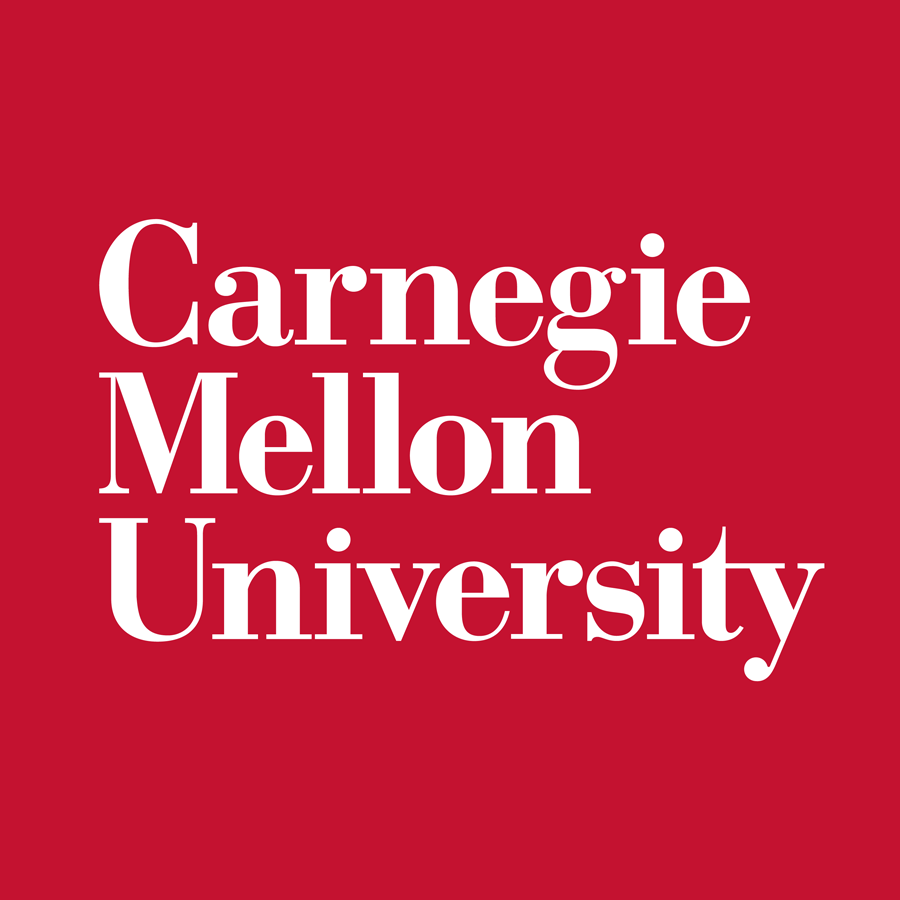Given the inherent heterogeneity of complex nanostructures, field-flow fractionation (FFF) has evolved as an analytical tool of versatile state-of-the-art separation techniques for simplifying sample matrices, for subsequent microstructural analysis at a molecular level. Our highly specialized and experienced team focuses on researching and developing theoretical and applied analytical frameworks for the optimized utility of FFF in characterizing complex nanostructures.
The following FFF techniques are in our portfolio: (1) asymmetrical flow FFF (AF4), (2) hollow fiber flow FFF (HF5) and (3) thermal FFF (ThFFF), with the so-called quintuple detection modulus (MALS, DLS, differential refractometer, UV-Vis, and differential viscometer) for multidimensional characterizations and correlations. With this analytical platform, we are able to draw correlations on both quantitative and qualitative levels for in-depth physical and chemical understanding of natural and synthetic macromolecules, their self-assemblies and bioconjugates.

Conformational Properties of Complex Polymers, Vesicles and Conjugated Structures.
We are continuously establishing new protocols for in-depth vesicle characterization (polymersomes and exosomes) to understand structural transformations dependent on loading or modification processes. Furthermore, we continue to gain valuable expertise in the analysis of intra and intermolecular interactions between various types of molecules (polymers, proteins, nanoparticles, enzymes).

Reengineering der thermischen Feldflussfraktionierung für die Biokompatibilität: Ein neuartiger Ansatz zur Charakterisierung der Bindungsaffinität und mikrostrukturellen Dynamik zwischen biopharmazeutischen Nanostrukturen und aktiven pharmazeutischen Wirkstoffen.
Awarded to Dr. Upenyu Muza
2025 – 2027

Optimized analytical strategy for malaria-targeted drug delivery systems and drug release dynamics.
Awarded to Dr. Zanelle van Niekerk.
2025 – 2026
This project focuses on developing multidimensional analytical approaches to simultaneously characterize drug delivery systems and to quantify drug release dynamics. By improving the understanding of these systems, the research aims to enhance the evaluation and optimization of next-generation antimalarial therapies.
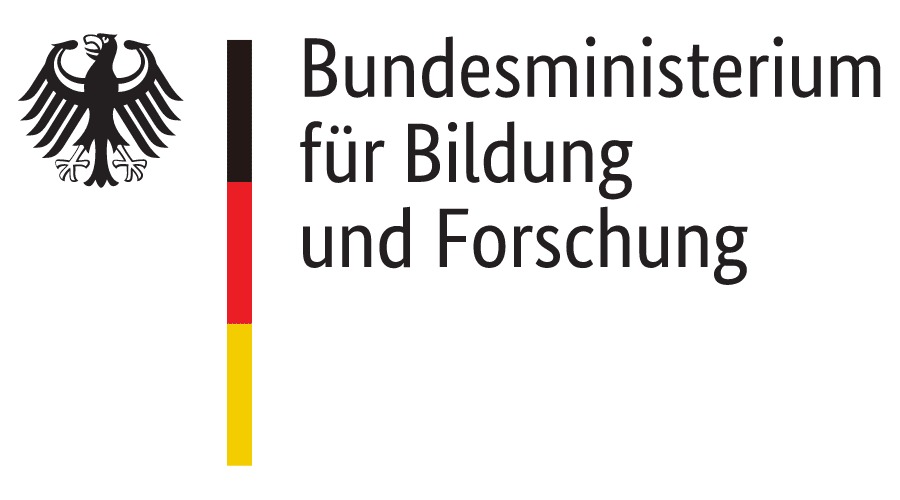
Engineering and advanced characterization of multifunctional polymer-metal nanostructures.
2023 – 2025
The project aims to develop competent and robust synthesis and analysis strategies for the
characterization and subsequent application of polymer-metal nanostructures in the design of photosensory
electronics and photo-rechargeable solid electrolytes.

3D polymer matrix device for dual drug delivery and simultaneous treatment of acute malaria and malaria transmission (coordination).
2021 – 2024
The project focuses on the development of a sustainable approach for the treatment and prevention of malaria by using existing technologies and antimalarial medicine that has been prove to be most effective against the malaria parasite. A custom-designed polymer-based system will be developed that will be able to administrate multiple antimalarial drugs in a controllable manner to treat the entire cycle of the malaria disease to ensure long lasting benefits. The device will attempt to simultaneously treat acute malaria and eliminate malaria distribution by the blocking of malaria transmission in one single application.
For more information:

Smart Nanoparticles: Responsivity Analysis using Field Flow Fractionation.
Awarded to Zahn Stanvliet
2021 – 2022
This project focuses on investigating the pH and temperature dependence of dual-responsive polymersomes. With the aid of AF4, polymer separation can be achieved to determine the dispersity and effectiveness of both – the pH switch point and the LCST behaviour of the polymers and their self-assembled nanoparticles.
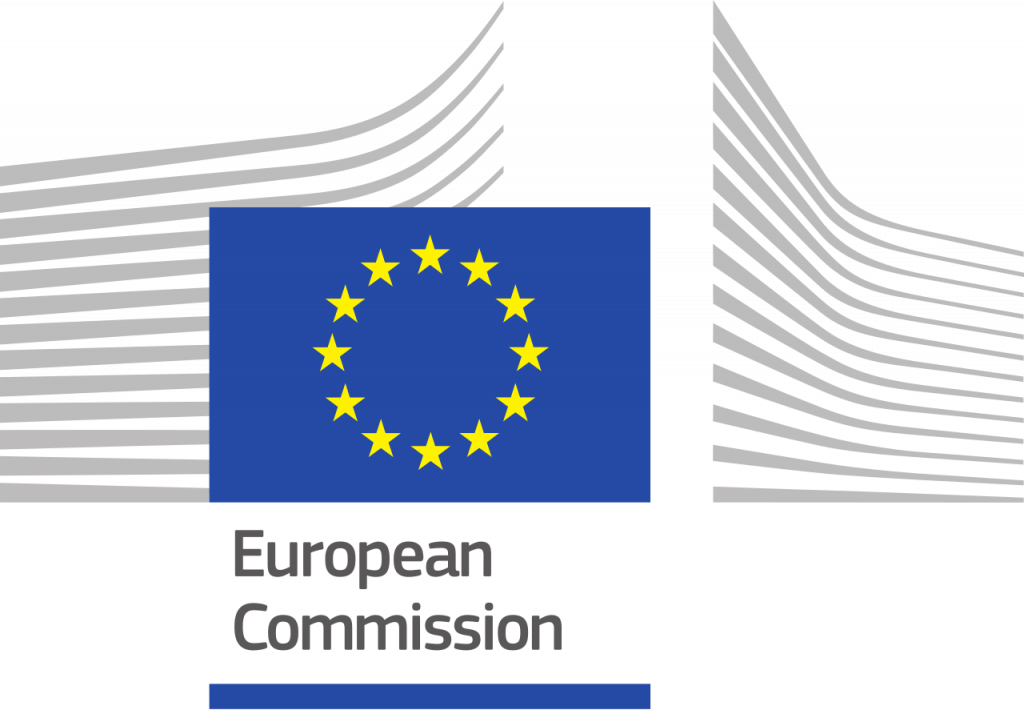
Advanced Analysis of Polymersome and Exosome Hybrids for Potential Application in Therapeutics and Diagnostics (coordinator).
2020 – 2022
Within the Usome project, novel analytical fractionation protocols are developed to elucidate the structure and composition of artificial and biohybrid systems. The biohybrid systems being investigated include polymersomes that are encapsulate with proteins and hybrid vesicles that are modified with proteins and polymers.
For more information:
https://www.usome.online/ and https://cordis.europa.eu/project/id/898878

Synthesis of Multifunctional Glyco-Pseudodendrimers and Their Investigation as Anti-Alzheimer Agents.
Awarded to Shamila Firdaus
2017 – 2021
The SMWK project focuses on the synthesis of novel dendritic glycopolymer structures and their application for the treatment of Alzheimer Disease. The concept behind the project is that these newly developed polymers should delay/prevent the interaction of the peptides into harmful amyloids and aggregates.

Acid gelation of enzymatically cross-linked caseins: from molecular level to network formation.
2016 – 2024
Within this project, the structure-function-interaction of enzymatically cross-linked casein nanoparticles on different length scales have been analyzed.
This project was in collaboration with the Food Engineering Department / Institute of Natural Materials Technology of TU Dresden.
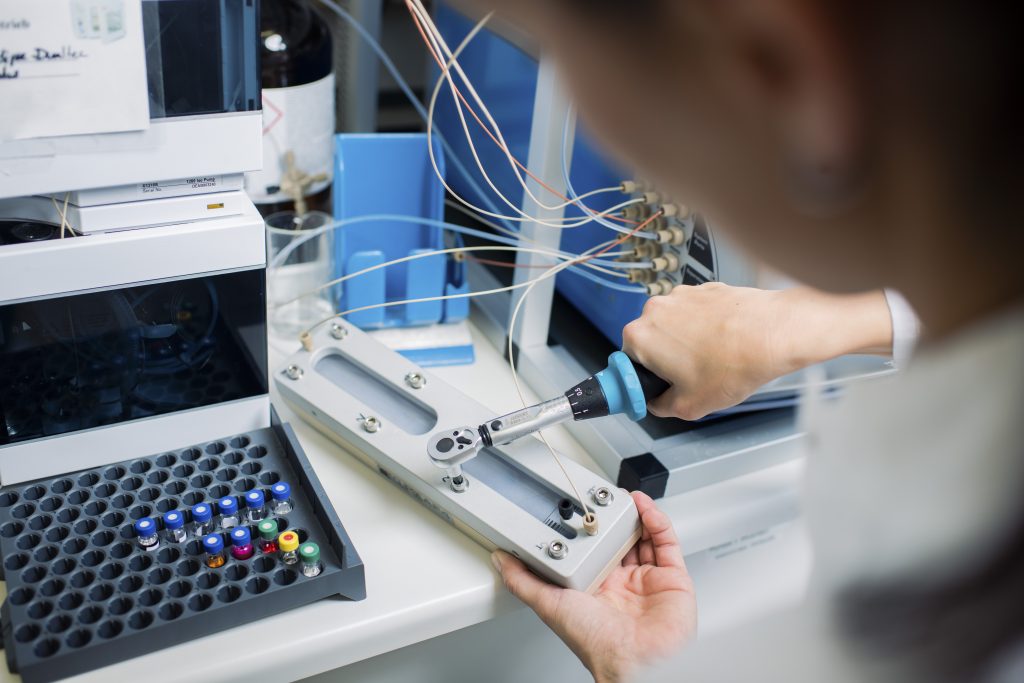
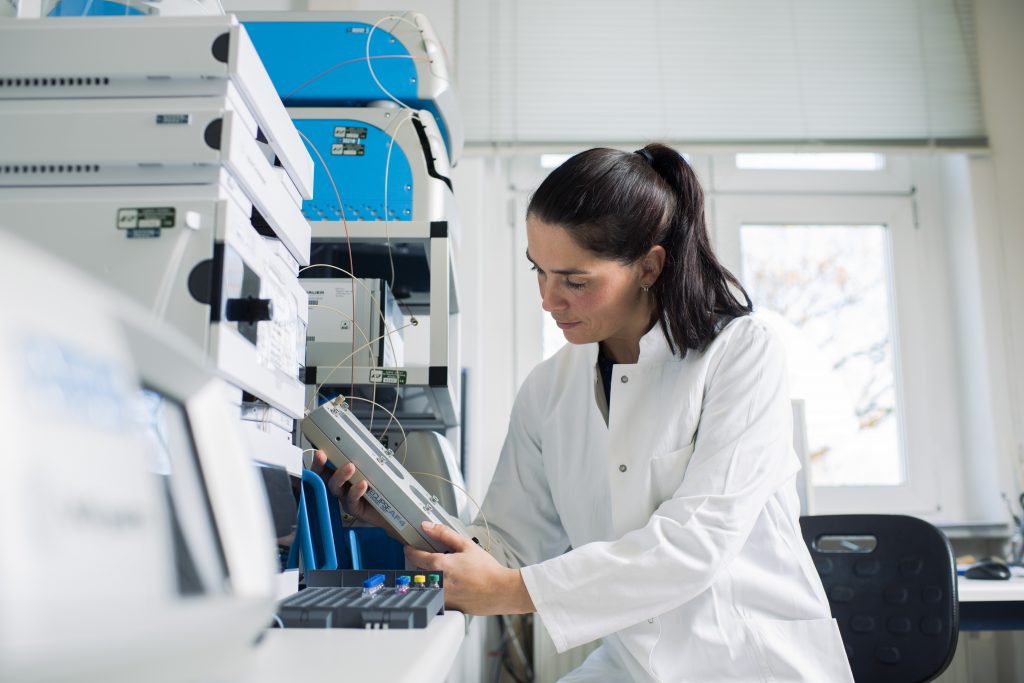
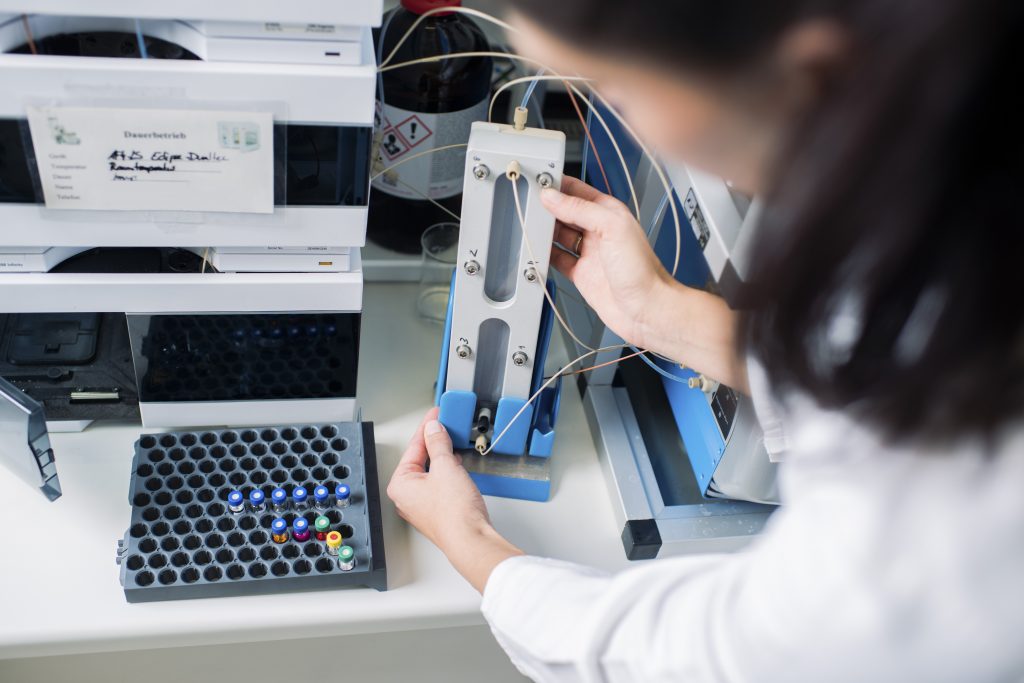
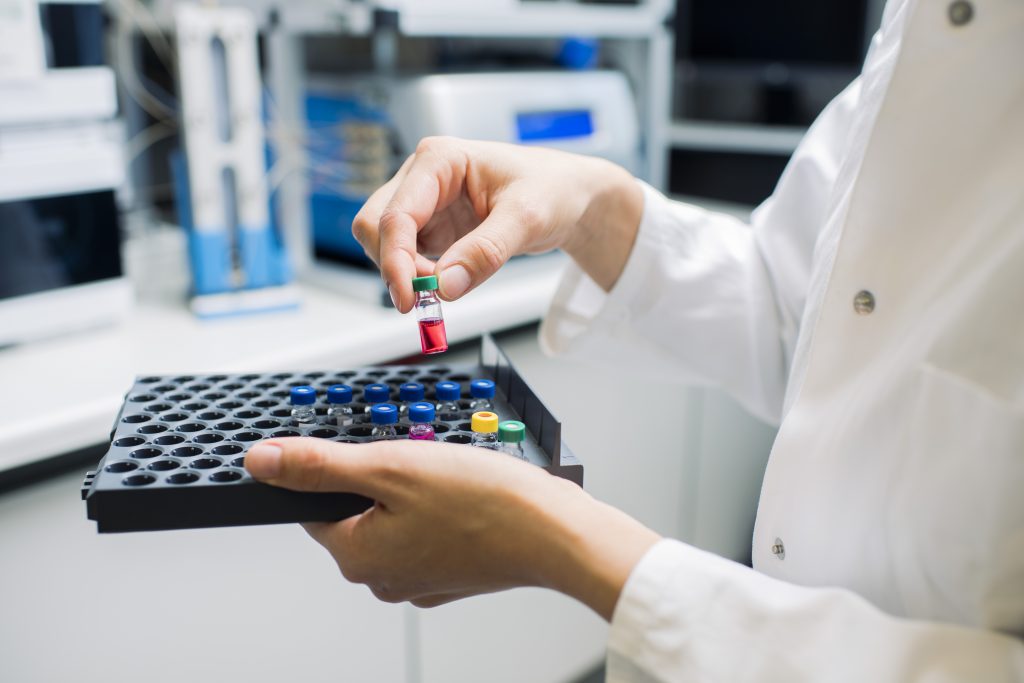
Field flow fractionation is one of the most versatile separation techniques compared to standard separation techniques such as SEC. FFF covers a size range from 1 nm up to 10 µm and offers optimizable separation performance for a high efficiency. The biggest advantages are: no stationary phase (reduced interactions); gentle separation conditions (reduced shear forces) and flexible use of eluents.
Asymmetrical flow field-flow fractionation (AF4) is the most applied FFF subtechnique for the separation of macromolecular samples. Here, the separation takes place inside of a channel by a cross-flow perpendicular to a longitudinal solvent stream. Particles are concentrated on the membrane. This is counteracted by diffusion, and the particles are driven back into the channel, resulting in a height distribution across the membrane. Due to the parabolic flow profile, the particles are separated depending on their translational diffusion coefficient Dt (and accordingly on the hydrodynamic radius Rh) as well as the crossflow velocity.
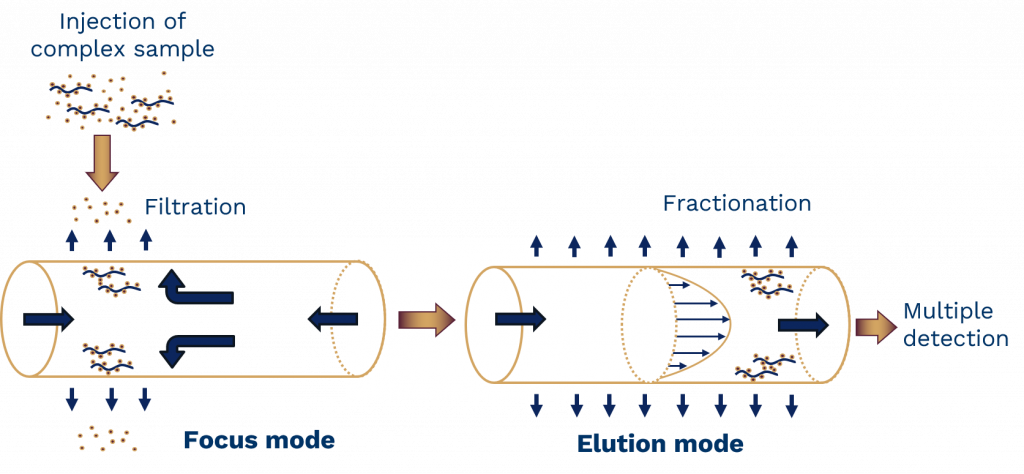
Hollow-fiber flow FFF (HF5) uses a tubular separation channel with minimized sample interactions enabling a higher sensitivity and higher separation efficiency. In the FFF team, we are applying HF5 for studying fragile systems at very low concentrations, such as tiny amounts of synthesized polymers as well as encapsulation and release studies of very valuable and expensive peptides or drugs. Furthermore, the gentle characterization of weak interactions between molecules will be performed due to reduced flows and shear forces.
ThFFF employs the same working principles similarly to other FFF techniques, utilizing a perpendicular temperature gradient across the channel as the separation force field. The separation in ThFFF is governed by the interplay between the thermal diffusion (DT) and the translational diffusion (D) of the analyte molecules. This ratio of the two diffusion coefficients, DT/D, is referred to as the Soret coefficient. The dependence of thermal diffusion coefficient on chemical composition and microstructure can be applied to obtain multiple sensitivities for fractionation of complex samples.
From a single measurement, we are able to obtain a huge amount of data by using our modular multi-detection system. This allows us to obtain information:
When these data are considered and interpreted in context, it allows us to make further statements about conformations and shapes of molecules.
One of our main research avenues focuses on the deep understanding and elucidation of structural transformations within complex macromolecular samples depending on different parameters (such as molar mass, cross-linking, pH, concentration, etc.). Here, we are using the high power of multidetection that provides us a large amount of information obtained from a single run. Therefore, we consider a variety of parameters that describe the molecular shape in dilute solutions. Some of these are, for example, the behavior of the molar mass as a function of the Rg (scaling parameter) or intrinsic viscosity (Kuhn-Mark-Houwink-Sakurada exponent), as well as the ratio of the Rh to the Rg (r parameter). In addition, we examine molar mass dependent apparent density changes which can support the conformational data. Particularly noteworthy, for example, are our AF4 studies of the internal folding process of single-chain nanoparticles (ACS Macro Letters, 2020). Here we could demonstrate that increased internal crosslinking density results in higher compactness. Furthermore, this compactness is also related to the chain length of the individual polymers.
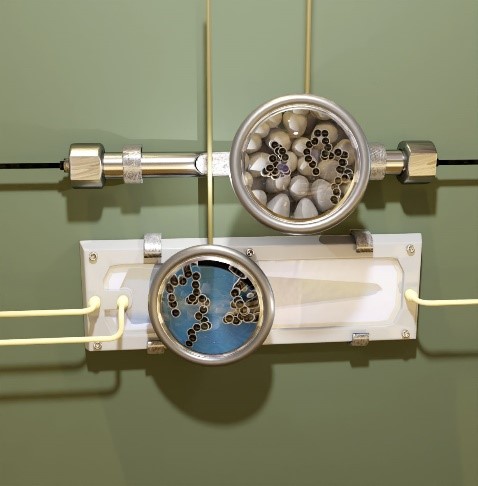
Another important research area of our FFF team is the study of interactions between similar (intra) and different (inter) molecules. The intramolecular interactions include systematic studies of aggregation behavior, which can be influenced by various parameters (sample concentration, measurement conditions, temperature, salt composition of solvent, etc.).
Intermolecular interactions is a much more diverse field. We specialize in the study of hybrids/conjugates of polymers and proteins. Here we are able to use multidetection to assess conjugation success both qualitatively and quantitatively. For example, we have succeeded in quantifying the content of hybridized polymer chains on the surface of exosomes (PNAS, 2021) and correlating this with conformational changes.
We have also made great progress in the field of studying loading processes. With the help of our unique experience, we are able to correlate the conformations of pH-responsive polymersomes before and after loading with enzymes or proteins, for example, and thus draw conclusions about the localization of the cargos. We are able to make statements as to whether the guest molecules tend to accumulate on the surface or within the polymersome membrane or whether they diffuse into the inner lumen. In each case, these processes are also related to the size or loading of the guest molecules. In addition, we can determine the amount of these encapsulated molecules.
The theoretical description of the separation process in ThFFF is still limited for DT. Therefore, in our team we tried to answer the question to which extent does the solubility influences DT. We considered a polymer model system (chain walking polyethylene) with varied topology. Additionally, we applied a combination of an existing thermal diffusion prediction model and the Hansen solubility theory to find suitable solvents for efficient ThFFF separations.
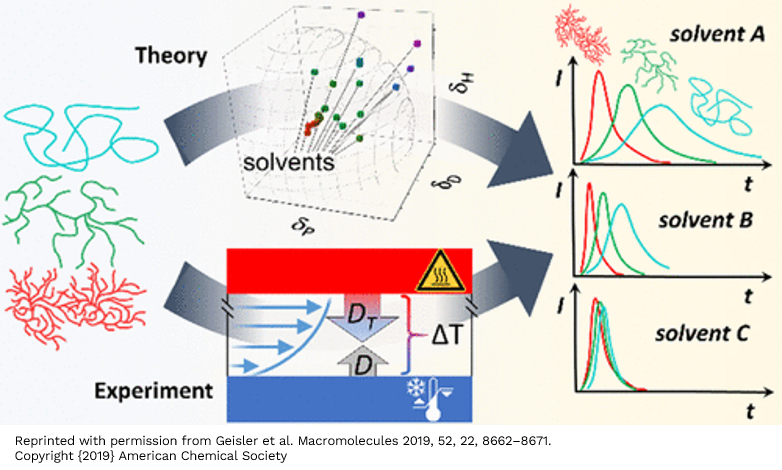
Another approach is to compare experimental data and data calculated from AF4 theory. Here, we are particularly interested in finding out where the limits of online and batch DLS measurements lie, and in optimizing them to efficiently combine measurement effort and high separation performance.
All publications of the FFF team, can be found here.


